 Image search results - "San" Image search results - "San" |
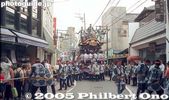
Held in July, Narita Gion Matsuri Festival has ornate floats pulled on the streets of Narita and to Narita-san temple. Pulling a float on the street
|
|

Pulling the float, Narita Gion Matsuri
|
|

Tired from walking, Narita Gion Matsuri
|
|
|
|
|
|
|
|
|
|

"Watakushi, umare mo sodachi mo Katsushika, Shibamata desu..." (I was born and raised in Shibamata, Katsushika Ward) If this opening line sounds familiar, you must be one of the many ardent fans of Tora-san movies.
|
|
|

The Tora-san "Otoko wa Tsurai Yo" (It's Tough Being a Man) movie series was played by the late Atsumi Kiyoshi. Tora-san is Japan's most lovable drifter and lovelorn on the silver screen. Forty-eight movies in this series were produced from 1969 to 1995. Katsushika-ku is where the Tora-san Museum is.
|
|

Narita Gion Matsuri
|
|

Statue of Tora-san in front of Shibamata Station. Posed like he's going to the station for another faraway trip...
|
|

Narita Gion Matsuri
|
|

This is a pose when Tora-san goes to the Shibamata Station and he looks back to his sister Sakura who calls him.
|
|
|
|

The first Tora-san movie came out in 1969 and over 40 more installments have been produced since then. It is entered in the Guiness Book of World Records as being the movie series with the most sequels.
|
|
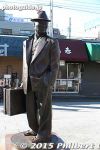
He will soon be accompanied by a statue of his sister Sakura.
|
|
|

Shibamata Station is on Keisei Kanamachi Line which runs between Kanamachi Station on the Japan Railways Joban Line (originating at Ueno Station) and Keisei Takasago Station on the Keisei Main Line coming from Keisei Ueno Station.
|
|
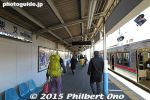
Shibamata Station platform
|
|
|

Shibamata Station platform
|
|

Side entrance to Narita-san temple.
|
|

Shibamata Station
|
|
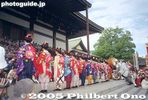
Offering prayers at Narita Gion Matsuri
|
|

There are plans to build a statue of Sakura, Tora-san's sister, near this statue at Shibamata Station
|
|
|
|

The plot is basically the same for each installment: middle-aged Kuruma Torajiro^ (Tora-san) meets pretty woman (the movie's leading lady whom the Japanese call the "madonna"), has a good time with her and falls in love. Photo: Tora-san Mus
|
|
|

Ontakesan Station on the Tokyu Ikegami Line which starts at Gotanda Station. 東急池上線御嶽山駅
|
|

The Sanno Matsuri Festival is one of Japan's Big Three Festivals and one of Tokyo's Big Three Festivals held in mid-June during several days. The main highlight is the Jinko-sai Procession held every two years. The 600-meter long procession consists of about 500 people parading through central Tokyo near the National Diet, Imperial Palace, Tokyo Station, and Ginza. It includes three portable shrines, carriages, and flower floats. Various events are also held at Hie Shrine which holds the festival. Jinko-sai Procession left Hie Shrine at 8 am on June 11, 2004. Before noon, they approach the Imperial Palace. 山王まつり神幸祭
|
|

Mt. Mitake is one of Tokyo's easily accessible peaks via cable car. But it still requires a good deal of climbing up slopes and steps. You can also hike to adjacent Mt. Hinode-yama. Great daytrip getaway from Tokyo's concrete jungle.Getting off the train at Mitake Station on the JR Ome Line. I wasn't the only one who decided it was a good day to hike up Mitake. 御岳駅
|
|

He somehow always loses her much to the dismay of his married sister Sakura (played by Baisho Chieko) and adoptive uncle and aunt who run a small kusa dango (mugwort dumpling) shop in Shibamata.Photo: Tora-san Museum 寅さん記念館
|
|

Gathering at Narita-san temple
|
|

Path to Ontake Jinja.
|
|

The Jinko-sai Procession passes in front of the Imperial Palace.
|
|

Mitake Station on the JR Ome Line. 御岳駅
|
|

He is a drifter who travels extensively all over Japan and works as street vendor/hawker selling little trinkets and what not. Photo: The stripe pattern of the walls is the same as Tora-san's coat.
|
|

Prayers at Narita-san
|
|

Ontake Jinja 御嶽神社
|
|

For a procession this large and grand, the crowd of spectators was extremely sparse. Good for photographers like me, but it was strange.
|
|

He returns home to Shibamata every once in a while, usually at a most inopportune time for the family, and eventually leaves in disgrace after a family argument or lost love. Photo: Map of Japan marking all the prefectures where Tora-san was filmed.
|
|

Narita Gion Matsuri
|
|

Ontake Jinja, main hall on right.
|
|
|

Mitake Station on the JR Ome Line. 御岳駅
|
|

It is difficult to pinpoint exactly why the series is so popular and enduring. It's probably a combination of several elements. Photo: Summary of all movie installments
|
|
|

Behind Ontake Shrine's main hall is a wall of sculpture.
|
|

Hie Shrine's Sanno Matsuri Jinko-sai Procession in front of Imperial Palace.
|
|

Bus stop for cable car station.
|
|

The hilarious humor of the characters, the heartwarming scenes, the shitamachi charm of Shibamata, the beautiful scenery and quaintness of the places Tora-san visits, the guest stars. Map of Japan marking all the prefectures where Tora-san was filmed.
|
|
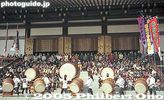
Main stage at Narita-san temple.
|
|
|

Closeup of rear wall sculpture.
|
|

A symbol of Chichibu, Mt. Bukosan is being slowly eaten away by cement companies. 武甲山
|
|
|

Bus for cable car station.
|
|

Atsumi Kiyoshi who seems to have been born to play Tora-san. (Atsumi never seemed to age even after over 20 years in the role. Tora-san's carefree, happy-go-lucky lifestyle also appeals to many. Photo: Sculpture of Tora-san's famous hat and bag.
|
|
|
|

Wedded Pine Trees
|
|

Hitsujiyama Park with weeping cherry blossoms and Mt. Bukosan. 羊山公園
|
|

One of the three portable shrines.
|
|

Cable car station.
|
|

Sculpture of Tora-san's famous hat and bag
|
|
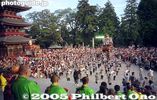
Narita-san during Narita Gion Festival
|
|
|

Another nearby shrine is Tenso Jinja, a 5-min. walk from Ontakesan Station. This is the schedule for their annual Negi-no-Mai Dance held on April 21.
|
|

Hitsujiyama Park with weeping cherry blossoms
|
|

The original procession included many high floats. However, due to overhead power lines and overpasses, such floats cannot be included.
|
|

Welcome to Mt. Mitake
|
|

Notice the figure on the upper right...
|
|
|
|
|

Tenso Shrine 天祖神社
|
|

Hitsujiyama Park and Mt. Bukosan.
|
|
|

Cable car for Mt. Mitake.
|
|

Entrance to Tora-san Museum where Tora-san is helping to install the museum sign.
|
|
|

Main stage at Narita-san temple.On Saturday evening, the festival climaxes with a free show on the main stage. The best taiko troupes from Japan and overseas performed for 2 hours.
|
|

Tenso Shrine 天祖神社
|
|

Hitsujiyama Park and Mt. Bukosan.
|
|

Omiko Shrine maidens
|
|

570 yen one way. There's also a lift for an extra 100 yen. No one rides the lift.
|
|

Tora-san is helping to install the museum sign.
|
|
|
|

Tenso Shrine altar
|
|

Flower float, Sanno Matsuri
|
|

Cable car to Mt. Mitake
|
|

Tora-san is helping to install the museum sign. What a great gag. Get you laughing even before you enter.
|
|
|
|
|

Negi-no-Mai Sacred Dance at Tenso Shrine on April 21, starting at 3 pm. 禰宜の舞
|
|
|

Mitake-san Station for cable car
|
|
|
|

Narita Gion Matsuri
|
|
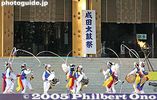
Drum troupe from S. Korea
|
|

The dance is a prayer for a good harvest and to ward off bad luck. This dance was once performed by about 20 shrines along the Tamagawa River in Tokyo and Kawasaki. Now, only this shrine performs it in Tokyo. 天児屋根命(あめのこやねのみ�This god is called Amenokoyane-no-Mikoto (god of festivals).
天狗様「猿田彦命(さるたひこのみこと)」や、神事、祭りを司る神「天児屋根命(あめのこやねのみこと)」、山の幸の神「彦火火出見命(ひこほほでみのみこと)」など、それぞれの役どころを表現する個性豊かな神の舞を見せてくれる。
|
|
|
|

Lookout deck near cable car station
|
|
|
|

A small square area with a straw mat enclosed by a shimenawa sacred rope is the makeshift stage for the Negi-no-Mai Sacred Dance at Tenso Shrine.
|
|

Rest stop near Sakashita-mon Gate at the Imperial Palace.
|
|

View from lookout deck on Mt. Mitake, Tokyo
|
|

Actual film studio mockup of Kuruma-ya dumpling shop
|
|
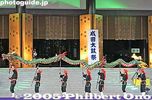
Taiko troupe from OkinawaThis group stole the show with a dragon dance, lion dogs, and eisa taiko drummers.
|
|

A total of five gods are depicted in this sacred dance. Today, "Negi" refers to the rank of a Shinto priest. During the Edo Period, "Negi" referred to Shinto priests in general. 山の幸の神「彦火火出見命(ひこほほでみ�
|
|
|
|

葛飾 柴又 くるまや
|
|
|

This god is called Hikohohode-no-Mikoto which brings food from the mountains. Negi-no-Mai is nicknamed Dedenko-mai, in reference to the taiko drum beat ("dedenko").
|
|
|

Mt. Hinode-yama which is next to Mt. Mitake.
|
|

Inside the studio set of Tora-san. Reconstructed with the original studio set materials used at the Ofuna movie studio.
|
|
|

This last god, called Oyamazumi-no-Mikoto, threw mochi rice cakes to everyone. He brings water, greenery, etc. from the mountains. 大山
|
|

Shrine maidens dance in front of the three portable shrines near Sakashita-mon Gate.
|
|

Lift station in middle (very short distance) which no one rides.
|
|

Kuruma-ya dumpling shop
|
|
|

After the Negi-no-Mai Dance, the shrine priest mixes branches and paper in boiling water. 「お湯花(ゆばな)」という儀式
|
|
|

Welcome Gate. Everyone goes through here instead and walk toward the top.
|
|

Family living room
|
|
|
|

This ceremony is called Yubana, meaning "hot-water flowers."
|
|
|

Back of welcome gate.
|
|

Family living room
|
|
|

People then tore off the zigzag paper from the shimenawa rope and dipped it into the hot water and wiped themselves on their face, etc., for healing prayers.
|
|
|

Torii ahead. Mt. Mitake is topped with a Shinto shrine.
|
|

Inside the shop
|
|
|

The festival ended in about an hour.
|
|
|
|

Torii
|
|
|
|

Ontakesan Station
|
|

During this break period, the shrine priest and other representatives enter the Imperial Palace to pray for the peace, happiness, and prosperity of the Imperial family. Hie Shrine is the only shrine in Japan bestowed with this privilege.
|
|

Back of torii
|
|
|
|
|

Shopping street near Ontakesan Station
|
|
|
|

Kitchen where they made the dumplings.
|
|
|

Some entertainment.
|
|

Hailstones in Feb.
|
|
|
|

Last group
|
|
|

Hinode-yama, my target after Mt. Mitake.
|
|

Miniature shop arcade
|
|
|

Bird house
|
|
|
|
|
|

Tora-san's documents
|
|
|

Mt. Mitake Visitors Center where you can get maps and hiking advice.
|
|

Tora-san's passport
|
|
|

Inside Visitors Center
|
|

Tora-san's personal effects
|
|

The procession passes by Tatsumi Turret as it leaves the Imperial Palace.
|
|

Old minka house on Mt. Mitake, Tokyo
|
|

Contents of his famous travel bag
|
|
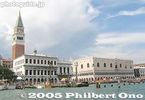
St. Mark's Square and Palazzo Ducale seen from the boatYou can also take a boat down the canal to go to the Venice Biennale site.
|
|

The Takayama Festival is held twice a year, during April 14-15 and Oct. 9-10. The spring festival is held by Hieda Shrine and it is called Sanno Matsuri. The festival features twelve ornate "yatai" floats which are displayed and pulled along the streets. In a large plaza, katakuri puppets perform on a few of the floats. The festival is also dramatic at night with a float procession. The Takayama Festival procession in spring starts at Hieda Shrine. Photo shows a banner reading "Hieda Jinja." 祭行列
|
|
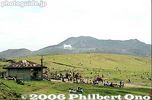
Kusasenri park 草千里Grassy park on the periphery of Mt. Aso.
|
|
|

Mitake-san Youth Hostel. The mountain has many lodges and inns.
|
|

Tora-san haniwa
|
|

Hie Shrine hall. The shrine is on Shiroyama Hill. 日枝神社On Dec. 1, 2016 (JST), Takayama Matsuri Festival was inscribed as a UNESCO Intangible Cultural Heritage of Humanity as one of 33 "Yama, Hoko, and Yatai float festivals in Japan."
|
|

Horseback riding at Kusasenri. 草千里
|
|
|
|

Slope up
|
|

More exhibits
|
|

The portable shrine (mikoshi) passes through Hie Shrine's torii to join the procession. 神輿
|
|
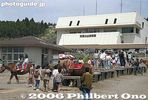
Aso Volcano Museum 阿蘇火山博物館
|
|
|

Thatched roof
|
|
|
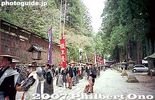
Shrine officials in the procession.
|
|
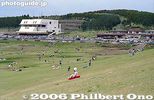
Kusasenri
|
|

A mikoshi passes by Tatsumi Turret of the Imperial Palace durng the Sanno Matsuri Jinko-sai.
|
|

Mt. Mitake, Tokyo
|
|

Movie posters
|
|
|
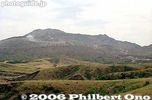
View of Mt. Aso
|
|
|

Veranda
|
|

Movie posters
|
|
|
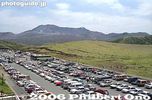
Kusasenri parking lot
|
|
|
|

Tree designated as a Natural Monument. Almost dead in Feb. though.
|
|

Leading ladies or the "madonna." It's quite an honor for an actress to be chosen as a madonna in a Tora-san movie
|
|

Shrine maidens
|
|

Grass skiing
|
|
|

Souvenir shops and restaurants
|
|

Tora-san souvenir shop
|
|

Mikoshi
|
|

Grass skiing
|
|
|

Steps toward Musashi-Mitake Shrine
|
|

After visiting the temple, most of the tourists walk to the nearby Edogawa riverbank which you often see in the Tora-san series. Road to Yagiri no Watashi (boat crossing)
|
|
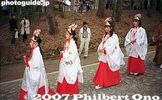
Shrine maidens
|
|
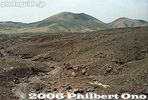
Spectacular ropeway ride
|
|

Road to Tokyo Station.
|
|

More steps
|
|

Edogawa River. Visiting Shibamata will enable you to appreciate and understand the local settings used to film the Tora-san series.
|
|

Shrine maidens
|
|
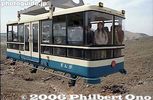
Aso-san Ropeway 阿蘇山ロープウェー
|
|

Crossing the street.
|
|

Lots of stone monuments (not gravestones)
|
|

Many movie scenes were filmed along this riverbank.
|
|
|
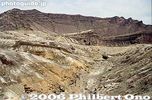
Ropeway
|
|

Verse 2 Lyrics (Omatsu/Omi-Maiko) 二番の英訳(雄松"Pine trees are very green, on sands very white.
Omatsugasato is, a young maiden's home.
Bush of red camellia, hides her teary face.
She's weeping o'er a lost love, much too short to last.
松は緑に 砂白き
雄松が里の 乙女子は
赤い椿の 森蔭に
はかない恋に 泣くとかや
Matsu wa midori ni, suna shiroki
Omatsugasato no, otomego wa
Akai tsubaki no, morikage ni
Hakanai koi ni, naku toka ya
Omi-Maiko is still famous for white sand beaches and pine trees. In summer these beaches are cluttered with people trying to get a tan.
See more photos of Omi-Maiko here.
|
|
|

More monuments
|
|

To Yagiri no Watashi
|
|
|
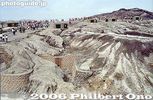
Aso Crater rim
|
|

All the auto traffic and urban noise robbed the dignity of the solemn procession.
|
|

More steps (rest time)
|
|
|
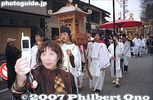
A middle-aged woman uses her camera phone to photograph herself. "I was here!"
|
|

Notice the emergency shelters.
|
|

"Pine trees are very green, on sands very white." Omi-Maiko
|
|

Crossing the street near Maru-biru Building. They proceeded to Tokyo Station, Kyobashi, Nihonbashi, Shimbashi, and Ginza before returning to Hie Shrine at 5:30 pm.
|
|

More steps...
|
|

The boats operate on weekends. Fare is 100 yen one way.
|
|
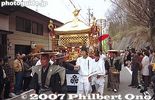
Portable shrine 神輿
|
|
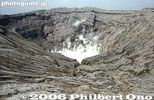
Mt. Naka-dake is Mt. Aso's most famous crater, Kumamoto 阿蘇山 中岳火口Measures 1 km wide north to south and 4 km east to west.
|
|

Map of Jinko-sai Route.
|
|

Oh my God, more steps...
|
|
| 2675 files on 11 page(s) |
1 |
 |
 |
 |
 |
|